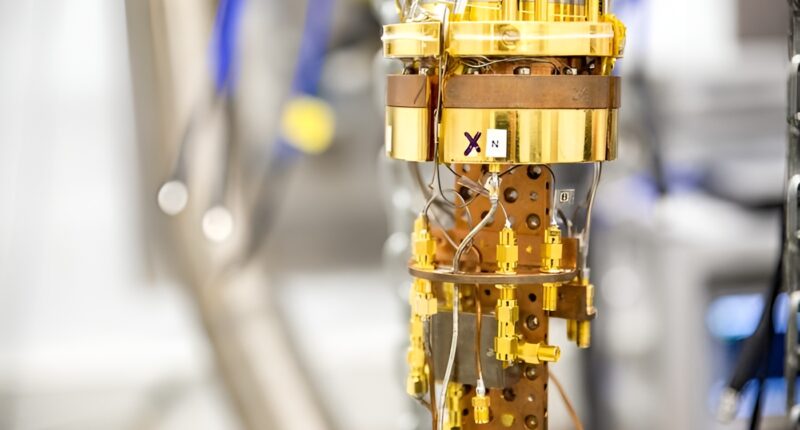Researchers at Aalto University have connected a time crystal to an external system for the first time, opening potential applications in quantum computing and ultra-precise sensing technologies.
The team, led by Academy Research Fellow Jere Mäkinen, demonstrated that time crystals can interface with optomechanical systems whilst maintaining their unique quantum properties. The breakthrough could enable memory systems for quantum computers that last significantly longer than current technologies.
Time crystals are quantum systems that perpetually repeat movements in their lowest energy state without external energy input. Nobel Laureate Frank Wilczek proposed their existence, and physicists experimentally proved them in 2016.
The researchers used radio waves to pump magnons into a Helium-3 superfluid cooled to near-absolute zero. When they switched off the pump, the magnons formed a time crystal that remained in motion for up to 108 cycles or several minutes before fading to unobservable levels. During this process, the time crystal connected to a nearby mechanical oscillator.
“Perpetual motion is possible in the quantum realm so long as it is not disturbed by external energy input, such as by observing it. That is why a time crystal had never before been connected to any external system. But we did just that and showed, also for the first time, that you can adjust the crystal’s properties using this method,” says Mäkinen.
The team found that changes in the time crystal’s frequency mirror optomechanical phenomena used in gravitational wave detection at the Laser Interferometer Gravitational-Wave Observatory in the United States.
Time crystals persist for orders of magnitude longer than quantum systems currently used in quantum computing. The technology could power memory systems in quantum computers or serve as frequency combs in high-sensitivity measurement devices.
The research was published in Nature Communications on October 16, 2025.











